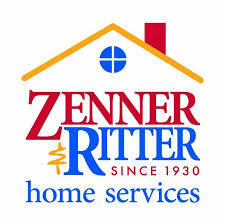Federal Tax Credits for Energy-Efficient Upgrades

Sometimes, cutting costs isn’t about slashing expenses — it’s about being smart with how and where you spend. For example, when you compare grocery prices or hunt down a better phone plan, that bit of extra research can lead to meaningful savings. The same applies at home, especially with systems like heating and cooling that play a major role in your energy bills.
If you’ve ever opened your utility bill after a bitter winter or a humid summer stretch and winced, you’re not alone. Many families are looking for ways to cut energy costs without sacrificing comfort. The good news is that upgrading to more energy-efficient heating and cooling systems can lower those monthly bills and open the door to valuable federal tax credits.
But here’s the thing — federal tax credits and local utility rebates for energy-efficient upgrades are all set to expire at the end of this calendar year. That means if you’ve been holding off on replacing an aging system, “waiting until next year” could mean missing out on thousands in combined savings.
Let’s walk through how federal tax credits for energy-efficient upgrades can benefit your household, what systems qualify, and how to make sure your investments bring long-term savings.
What Are Federal Tax Credits for Energy Efficiency?
A federal tax credit is different from a deduction. Deductions reduce your taxable income, while credits directly reduce the amount of tax you owe. So if you owe $3,000 in taxes and qualify for a $1,000 credit, you only pay $2,000. That’s real money back in your pocket.
When we talk about federal tax credits for energy efficiency, we’re talking about incentives that reward homeowners for making smart, energy-conscious improvements. The government offers these credits to help reduce nationwide energy consumption, encourage the use of cleaner technology, and make energy-efficient upgrades more accessible for families.
Why This Year Is Different
Normally, energy efficiency incentives are a nice bonus. This year, they’re an urgent opportunity. Federal tax credits for qualifying heating, cooling, and other home upgrades will expire after this year ends. On top of that, many local utilities in Western New York are discontinuing their rebate programs entirely.
If you combine both incentives, the savings can be substantial, in many cases making it possible to upgrade for a fraction of the normal cost. But once the clock strikes midnight on December 31, the window closes.
What Qualifies for Federal Energy Tax Credits?
Not all systems or upgrades will qualify, so it’s important to know what to look for before investing. Generally, here’s what qualifies for federal energy tax credits:
Heat Pumps
High-efficiency air source heat pumps are one of the top upgrades that qualify. These systems handle both heating and cooling and can significantly reduce your household’s energy use. Under the Inflation Reduction Act, you can claim up to 30% of the total cost, capped at $2,000 per year for qualified heat pumps. That’s a major tax break for one of the most efficient home upgrades available today.
Central Air Conditioning Systems
There is also a tax credit for energy-efficient AC systems, provided they meet or exceed ENERGY STAR certification standards. For 2025, you could qualify for up to $600 back. Keep in mind that the unit must meet specific SEER2 ratings (a measure of efficiency) to be eligible.
Furnaces and Boilers
You can get up to $600 in tax credits for upgrading to a high-efficiency gas furnace or boiler. These systems must meet specific Annual Fuel Utilization Efficiency (AFUE) standards — 97% AFUE for gas furnaces and 95% AFUE for gas boilers, both with ENERGY STAR certification.
Energy Audits
Did you know the cost of a home energy audit can also qualify for a credit? Having a professional inspection done can identify where your home is losing energy, whether that’s through old windows, poor insulation, or aging HVAC equipment. This kind of upfront evaluation often pays off not just in tax savings, but in smarter upgrades.
How These Tax Credits Actually Work
So, you’ve decided on an upgrade, but how do you actually get that credit?
Once you’ve installed a qualifying system, you’ll claim the credit when you file your federal income tax return. This is done using IRS Form 5695, which covers residential energy credits. You’ll need to provide documentation, such as product information, receipts, and possibly certification from the manufacturer that your system qualifies.
Let’s say you install a heat pump that costs $6,000. If it qualifies, you can claim up to 30%. That’s $1,800 directly off what you owe the IRS. If you owe $2,500 in taxes, your payment drops to $700. That’s how federal tax credits for energy-efficient upgrades work in real dollars.
What Else Can You Gain Beyond the Credit?
While the tax incentive is appealing, it’s just one of many reasons energy-efficient improvements are worth considering.
Lower Utility Bills
This is the day-to-day reward. Efficient systems use less power, meaning lower monthly bills. Depending on your current setup, a new system could cut your energy consumption significantly, especially if your old unit is outdated or oversized for your home.
Increased Home Comfort
Newer HVAC systems do more than just heat or cool — they regulate temperature more evenly, improve ventilation, and help manage humidity better. That means fewer hot and cold spots and a more comfortable space for your family.
A Smaller Environmental Footprint
Switching to a high-efficiency system helps reduce greenhouse gas emissions and overall pollution. Using less electricity or natural gas means your home is gentler on the environment, without losing any comfort.
Beyond HVAC: Other Upgrades That Qualify for Federal Energy Tax Credits
While heating and cooling systems are major players in home energy efficiency, they’re not the only improvements that come with a tax break. The federal government has expanded incentives to cover a range of upgrades aimed at reducing energy consumption and cutting household emissions.
Here are several other home upgrades that can help you save money while making your space more energy-efficient:
- Insulation Improvements: Adding proper insulation to your attic, walls, or crawlspaces can qualify for federal tax credits for energy efficiency.
- Energy-Efficient Windows and Doors: Replacing outdated windows or doors with models that meet certain requirements can earn you a credit.
- Solar Panels and Solar Water Heating Systems: Both fall under the Residential Clean Energy Credit and come with substantial benefits. Using solar energy reduces your dependency on fossil fuel and can boost long-term savings.
- Biomass Stoves: These environmentally friendly systems use organic material as fuel and may qualify for a renewable energy credit.
- Geothermal Power Systems: Installing geothermal heat pumps can help lower your energy consumption. These systems can also be eligible for a significant tax credit.
- Fuel Cell and Wind Turbine Systems: Though less common in residential settings, these technologies are supported under current renewable energy policies.
- Water Heaters: Upgrading to high-efficiency water heating systems, including heat pump water heaters, qualifies for energy credits.
Timing and Planning: How to Maximize Your Credits
With these credits, the government places annual limits. So a little planning goes a long way. If your household is considering multiple upgrades — maybe replacing your old furnace this year and adding a new AC system next summer — you can spread out the investments over different tax years to make full use of the annual caps.
The Bottom Line: Waiting Could Cost You Thousands
If your heating or cooling system is aging, needs frequent repairs, or just isn’t keeping up with your comfort needs, there’s no financial advantage to waiting. In fact, delaying until next year could mean paying full price for the exact same equipment without any of today’s federal or local incentives.
A Local Partner You Can Count On
If you’re serious about making your home more efficient and taking advantage of federal tax credits for energy-efficient upgrades, Zenner & Ritter is here to help.
We work with homeowners across Western New York to install heating and cooling systems that qualify for these credits. Whether it’s a new high-efficiency heat pump or central air conditioning installation in Buffalo, NY, we’ll help you find the right system and handle the installation with care.
Take the Next Step Before December 31 With Zenner & Ritter!
A heating or cooling upgrade isn’t just a home improvement — it’s an investment. Between the monthly energy savings and the federal tax credits for energy-efficient upgrades, it’s one of those rare times where spending money now really does mean spending less later.
Not sure if a ductless mini-split or a traditional central air conditioner is right for your home? If you’re dealing with limited ductwork or want more temperature control in certain areas, we’ve got you covered. We can help you install a heat pump, central air conditioner, or ductless air conditioner in Buffalo, NY, that fits your needs.
Reach out to Zenner & Ritter today to schedule your appointment in Buffalo or one of the nearby areas in Western New York! We’ll help you replace your aging system before the end-of-year deadline so you can keep more money in your pocket and enjoy a more efficient home all year long.
